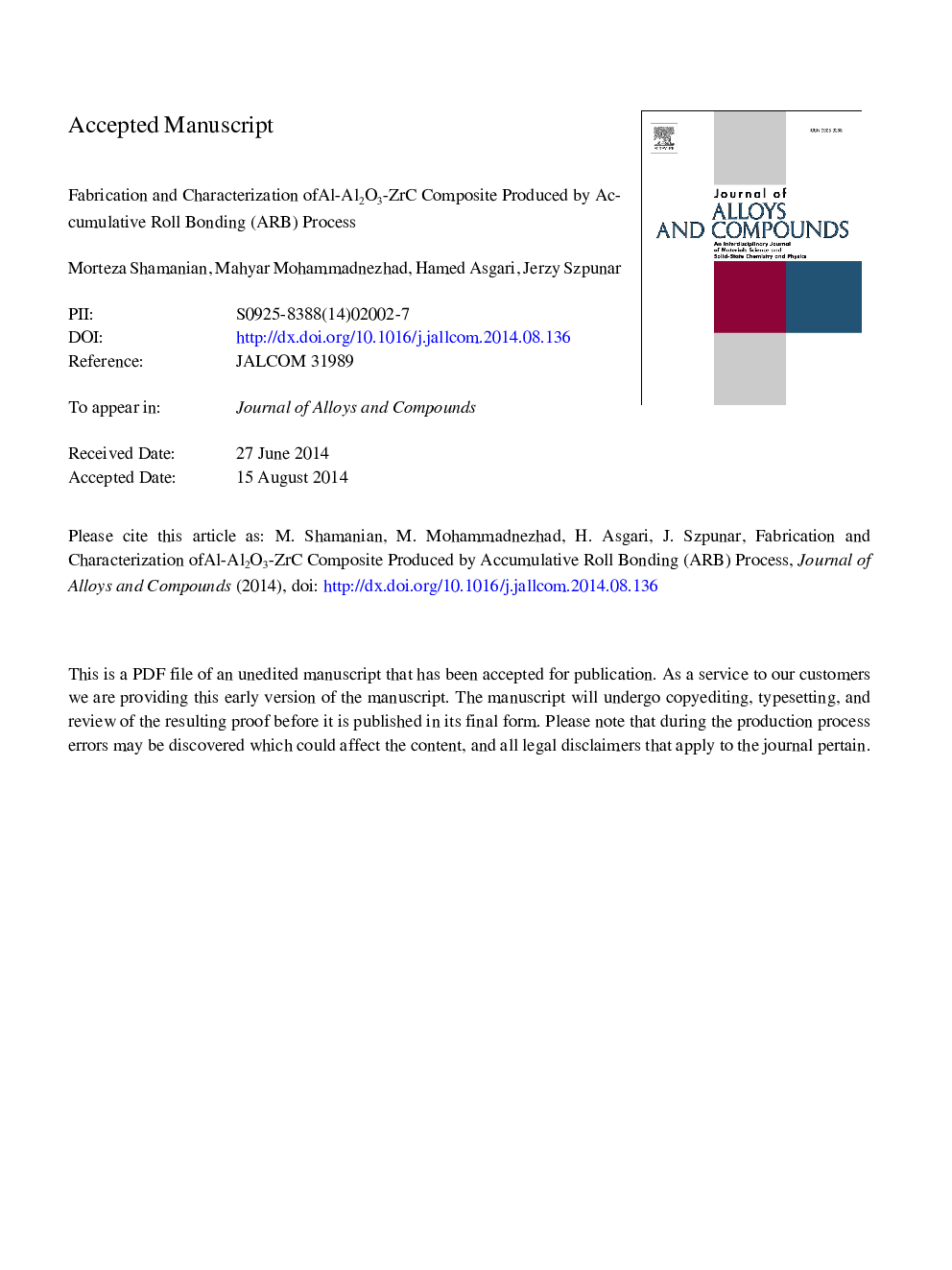| Article ID | Journal | Published Year | Pages | File Type |
|---|---|---|---|---|
| 1610318 | Journal of Alloys and Compounds | 2015 | 31 Pages |
Abstract
In this study, accumulative roll bonding process was used to manufacture a high-strength aluminum matrix composite dispersed with anodized alumina and zirconium carbide particles. Furthermore, the microstructure evolution, mechanical properties and deformation texture of the composite samples are reported. The results illustrated that when the number of cycles was increased, the distribution of reinforcement particles in the aluminum matrix improved, and the particles became finer. During process, it was observed that as the strain increased with the number of cycles, the tensile strength, microhardness and elongation of produced composites increased as well. The comparison texture results after various rolling cycles indicated that the overall texture intensity increases and a wholly-different-strong texture develop. The main textural component is the Rotated Cube component.
Related Topics
Physical Sciences and Engineering
Materials Science
Metals and Alloys
Authors
Morteza Shamanian, Mahyar Mohammadnezhad, Hamed Asgari, Jerzy Szpunar,
